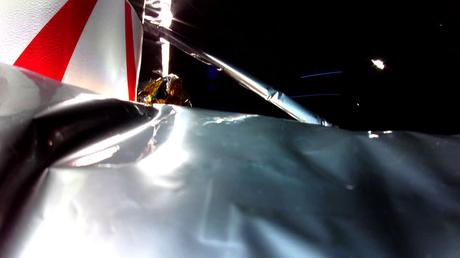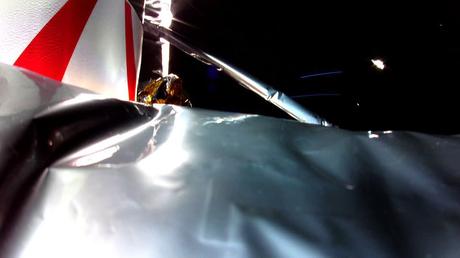Editor's Note: A version of this story appeared in CNN's science newsletter Wonder Theory. To receive it in your inbox, Register for free here.
Humans landed on the moon in the late 1960s and 1970s during NASA's Apollo program using computers that had far less processing power than today's smartphones.
Yet landing on the moon, even five decades later, is far from easy.
Several notable missions in recent years have proven this point: Israel's Beresheet spacecraft crashed into the ancient volcanic moon field called the Sea of Serenity in 2019, and last year Russia's Luna-25 mission and a commercial Japanese lander crashed called Hakuto-R both in. landed on the surface of the moon. (India, however, celebrated being the fourth country to land a spacecraft on the moon.)
Successful or not, the efforts are part of a new space race centered on the push for lunar exploration. Several projects are expected to head to the moon this year with a soft landing in mind.
The first flight - a commercial mission from the United States - did not go as planned.
Explorations


Astrobotic Technology, the Pittsburgh-based company that developed the first U.S. lunar lander in fifty years under a $108 million contract with NASA, has abandoned plans to soft land its Peregrine Mission One on the moon.
The spacecraft successfully lifted off Monday atop a Vulcan Centaur rocket, a new vehicle developed by United Launch Alliance that was on its maiden flight. Shortly afterwards, Peregrine suffered "critical" propellant loss due to a fuel leak, meaning a controlled moon landing, originally scheduled for February 23, is off the table, according to Astrobotic.
NASA had hoped Peregrine 1 would find early success with its Commercial Lunar Payload Services program, aimed at lowering the cost of building a lunar lander - especially as the space agency faces lengthy delays in returning astronauts to space. Moon.
The story continues
Discoveries
Northern Europeans are among those most susceptible to the debilitating autoimmune disease multiple sclerosis, and a new study based on DNA recovered from ancient bones and teeth has provided clues as to why.
A comparison of more than 1,000 ancient genomes collected as part of a new database found a link between multiple sclerosis risk and shared ancestry with a group of Bronze Age nomadic herders known as the Yamnaya.
Researchers believe that these nomads, native to the Central European steppe, moved westward and introduced a genetic variant that once protected against infectious pathogens carried by domesticated animals but evolved to affect modern diseases in a very different way.
Dig this


What led to the demise of the largest apes that ever lived?
New research published this week has shed more light on the mystery of why Gigantopithecus blacki - a species of primate sometimes called the real King Kong because it stood almost three meters tall - disappeared.
Paleontologists analyzed and dated fossils and sediment from the caves where the animals' remains were found to understand how their diet and the environment the creatures lived in changed over time, providing a likely time frame and reason for the extinction of the species could be limited.
Gigantopithecus was discovered in 1935 after paleontologist GHR von Koenigswald discovered large teeth being sold as 'dragon bones' in a traditional medicine shop in Hong Kong.
Throughout the universe
The first fast radio burst, or FRB, was discovered in 2007, and since then scientists have detected hundreds of intense, millisecond-long bursts of radio waves emanating from distant points in the universe.
Much about these rapid, cosmic flashes and their origins is still unknown. But now astronomers have traced one of the most powerful and distant fast radio bursts ever observed back to its unusual cosmic home: a rare "blob-like" group of galaxies.
The unexpected discovery could provide insight into the cause of the mysterious radio wave bursts, a question that has puzzled scientists for years.
Once upon a time there was a planet


The world's oldest known fossilized skin belonged to a species of reptile that lived before dinosaurs roamed the Earth.
With a pebbly surface that resembles crocodile scales, the skin fragment is more than 289 million years old - at least 130 million years older than what was previously the oldest known skin fossil, according to a new study published Thursday.
Skin and other types of soft tissue rarely become fossilized because they decay much more easily than bone.
But researchers at the University of Toronto Mississauga believe this sample was preserved because of the unique features of the location: the Richards Spur limestone cave system in Oklahoma, where many of the oldest examples of early land animals have been found.
Curiosities
Consider these remarkable stories:
- China, in collaboration with the European Space Agency and other institutions, has launched a probe that will hunt for X-ray bursts from black holes and other high-energy space phenomena.
- Despite growing concerns from scientists and environmentalists, Norway could become the first country to allow deep-sea mining.
- A 106-year-old three-masted sailing ship is on a two-year voyage following the pivotal journey of British naturalist Charles Darwin, who helped inspire his theory of evolution.
- An older and equally large relative of T. rex was recently identified in New Mexico, according to researchers.
Do you like what you read? But there's more. Register here to get the next edition of Wonder Theory in your inbox, brought to you by CNN Space and Science writers Ashley Strickland And Katie Hunt. They find wonder about planets outside our solar system and discoveries from ancient times.For more CNN news and newsletters, create an account at CNN.com
